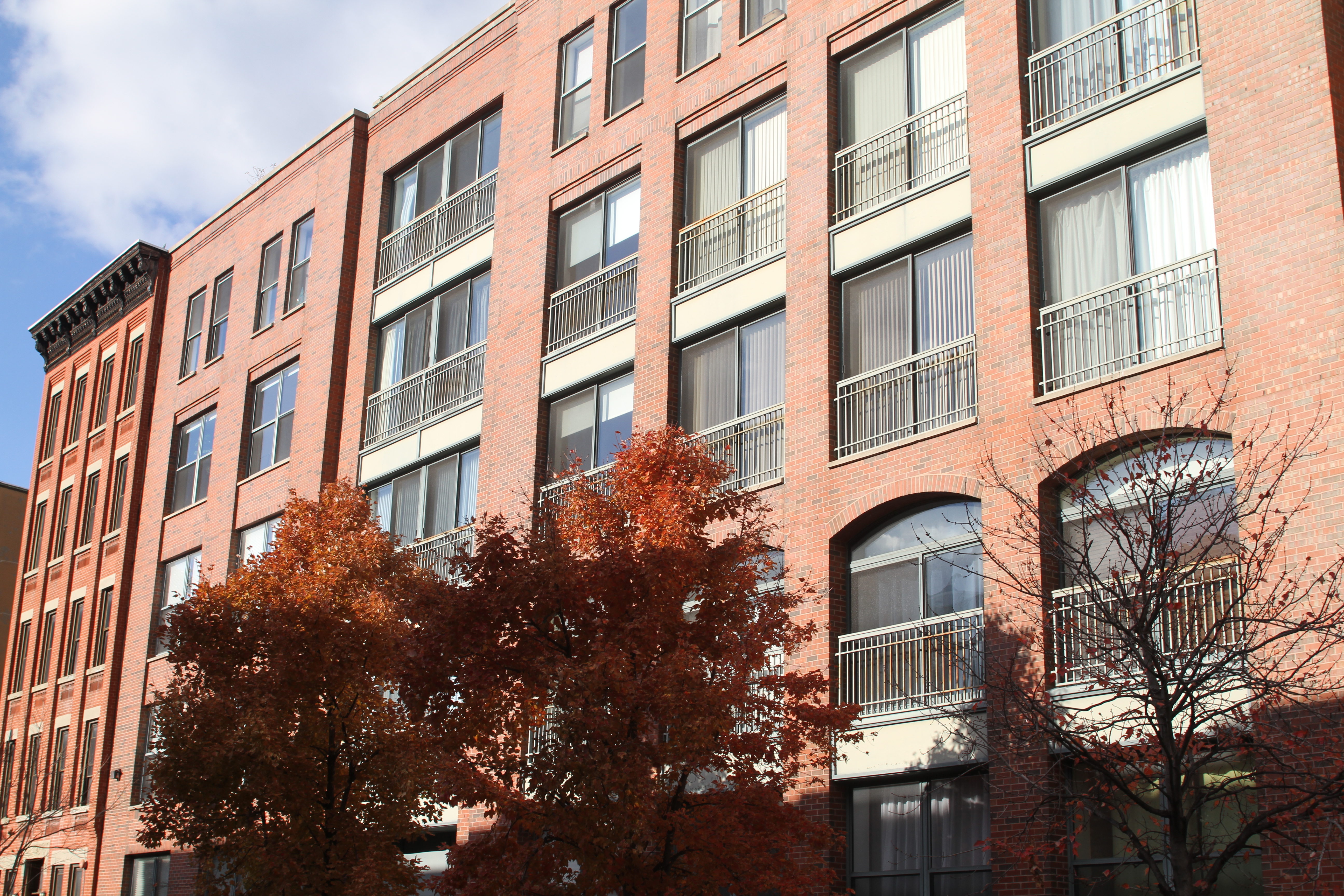Factory nostalgia, the celebration and idealization of the architecture and history of factories by reinventing them as appealing living spaces for the affluent, has been a major trend in the redevelopment of Jersey City for decades. While Dixon Mills was one of the first and largest factories to be transformed in this way, there are other more recent examples in which a similar pattern was followed in repurposing these old buildings. Like Dixon Mills, many have proudly kept the name associated with the factory’s product or industry. Today’s Sugar House condo building was yesterday’s American Sugar Refining Company. In 2000, it became Sugar House when it was converted into 64 condominiums.

For the developers of the Sugar House, the building’s architecture, with its large windows, 11-foot high arched brick ceilings and loftlike features were ideal for creating luxury housing.

Factories allow developers to create nonconventional housing that appeals to many. In referring to the Sugar House one of the designers of its apartments noted: “In that loft-like building, you have higher ceiling spaces. You don’t get that in new construction. It’s a higher standard of quality [of construction] than most of Hudson County.”

In 2007, the former American Can Company became Canco Lofts, a condominium development. As with all factories with landmark status, preserving some of the factory’s architectural elements such as its facade, was legally required. This obligation was turned into an advantage by highlighting the building’s Art Deco facade, 10 foot windows and lofts with 14 foot ceilings in marketing the building’s condos.

The building’s old giant columns are on proud display in the lobby. Keeping the original unvarnished look is part of the building’s industrial aesthetic.

For some residents, Canco Lofts has a sentimental appeal. As one said: “There’s something romantic about the idea of living in industrial space … the light, the high ceilings … about creating a home that’s got pipes running along the ceiling.”

The Park Foundry began as a brass factory and then became a warehouse. Today it has been restored as luxury housing with a nod to its history. The lobby has original floors and the apartments have high ceilings, original brickwork and arched windows. According to its website: “When you enter the lobby and feel the original floors underfoot, residents know they are living in a building which tells the magnificent story of Jersey City in the last century.”

Next to the Park Foundry the developers added another building with similar brickwork to blend in with the Foundry Lofts next door and to evoke a similar past.

The Majestic Theatre Condominiums, a building, which was formerly a factory, warehouse and church as well as movie theater, today houses 45 condo apartments. Its website describes it as a landmark building with “arched windows, plaster ornamentation, gabled marquee, mosaic tile and a decorative double-door entrance surrounded by the original iron gates.”

The developers kept and maintained the faded look of the sign on the wall of the old Majestic Theatre to call attention to the building’s history as an early movie theater.

Modera Lofts, while not a former factory, deserves mention because of the lengths it has gone to to preserve its history. It was originally a warehouse owned by the Butler Brothers who ran a wholesale mail order business. In redeveloping this property the new owners took special care to preserve its original structure. All posts, beams and brick walls were restored to their original state and “refinished by hand. The building’s old fire-doors were restored and mounted in public areas. Restored brass elevator gears are displayed on the second-floor lounge. Many old documents from the Butler Brothers’ business such as receipts and letters, are framed and hang on the wall in the lobby.

Factories and other former industrial buildings in Jersey City have been repurposed as luxury housing as developers seek new investment opportunities. Their architecture and history have been highlighted in marketing them as high-end living spaces. An industrial aesthetic valuing exposed brick and ductwork, high ceilings and large windows in loft-like spaces has been a central part of this process.

At the same time, bits and pieces of history are retained in the architecture and some artifacts which amounts to a selective and romanticized view of the industrial past of these buildings. The buildings and artifacts are retained, but not the stories of the people who worked at these sites. What happened to them when these factories and warehouses closed? That history is missing.
Follow This Blog
Get new content delivered directly to your inbox.
- Gentrification Math & the False Promise of Affordable Housing
- Why is the City Selling Public Property to Luxury Housing Developers?
- Why So Much Luxury Housing in a City Where Most Can’t Afford It?
- Why Do So Many New Apartment Houses Look Alike?
- Signs of Gentrification: House Numbers, Their Color and Design
